EQUALINES
Fagerstrand (NO) - Special mention

TEAM PORTRAIT
INTERVIEW
Click on the images to enlarge
1. How did you form the team for the competition?
We met while studying in the master programme of Urbanism at the TU Delft, The Netherlands. During our masters, we developed a diverse range of specializations that we are now pursuing in different academic and professional positions. The mix of interests and disciplines formed an ideal basis to work together on this competition.
2. How do you define the main issue of your project, and how did you answer on this session main topic, Living cities?
As Fagerstrand is posed for densification, a set of urban questions arises: where should the new center of the town be? How can the protection of unbuilt land be balanced with the protection of residents’ properties? How can the qualities of rural dispersion be aligned with the qualities of urban density? EQUALINES explores these questions through a simple principle: linear concentration. A central urban axis offers equal opportunities for old and new residents by establishing a strong local economy. A re-naturalized seaside restores and celebrates local ecosystems, giving the people of Fagerstrand the chance to experience a thriving post-industrial landscape along a permeable waterfront. A robust green network preserves and expands continuous habitats. The edges between built and unbuilt areas are activated through a variety of functions that enhance porosity between cultural, economic, and environmental flows.
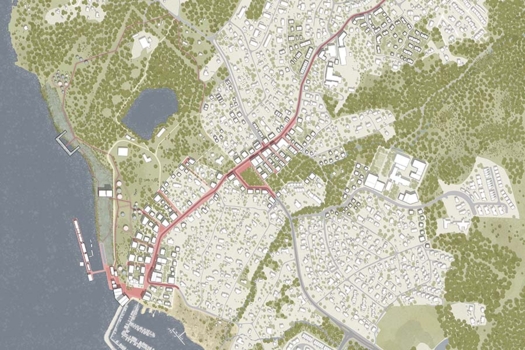
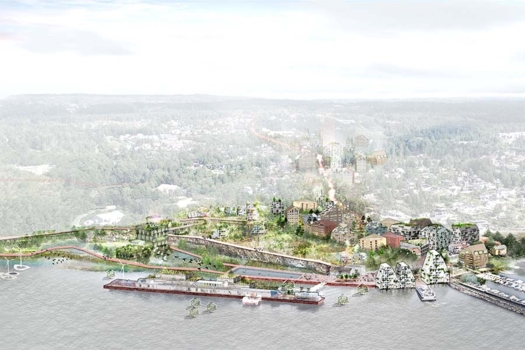
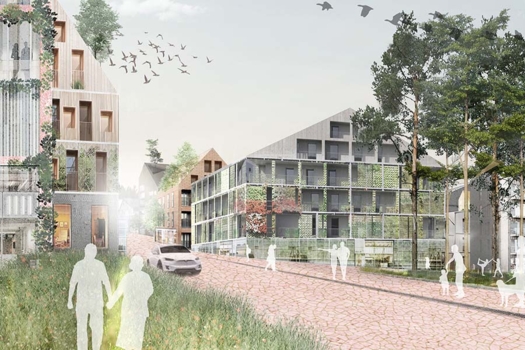
Potentials for metabolic vitality are harnessed by combining flows of food and energy, but also tourism, leisure, and entrepreneurial spirit. These flows are bundled along central lines, which matches their natural movements and stimulates synergies between them. The focus on linearity can offer access to opportunities to a large share of the population and creates less exclusion through peripheries than a concentric model. This is particularly true in the case of Fagerstrand, where the existing spatial configuration is already more linear than concentric. Lastly, the combination of multiple functions along a line creates a highly porous environment.
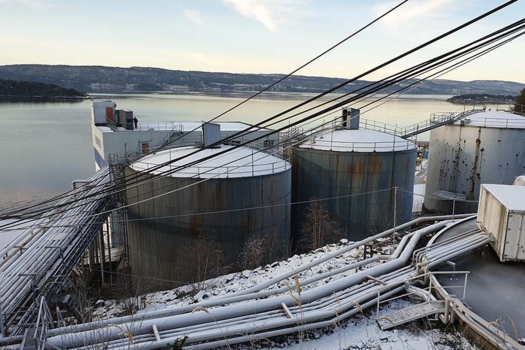
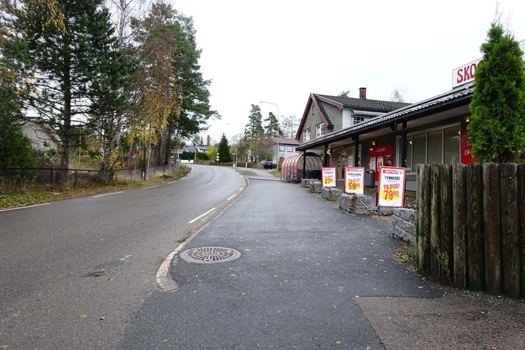
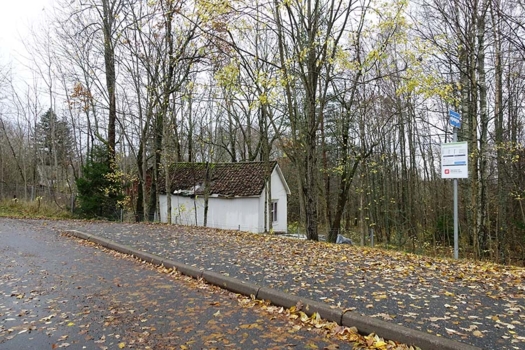
We have all touched upon questions of urban metabolism and inclusivity in our previous work. Moreover, one of our team members has previously worked on a Norwegian port city that faced very similar issues as Fagerstrand. Hence, our experience with research by design projects in The Netherlands and elsewhere were a crucial source of inspiration. Lastly, the architectural typologies that are already used in Norway gave us a basis to develop a “soft densification strategy”.
5. Urban-architectural projects like the ones in Europan can only be implemented together with the actors through a negotiated process and in time. How did you consider this issue in your project?
Our proposal has the potential to grow organically and carefully over time. The central axis forms a guide for most developments and defines certain nuclei, but the precise location and extent of urban densification is kept flexible.
6. Is it the first time you have been awarded a prize at Europan? How could this help you in your professional career?
This is the first time we participated at Europan. We see the award as a motivation to continue our design work on various scales and locations. Moreover, we are convinced that processes like Europan can further enhance our ongoing exchange between academia and practice.
TEAM IDENTITY
Office: -
Function: architecture, landscape, urbanism
Average age of the associates: 27 years old
Has your team, together or separately, already conceived or implemented some projects and/or won any competition? if yes, which ones?
This is the first time we participated at Europan. We see the award as This is the first time we won a competition as a team. Each of us has previously won student design competitions as well as other competitions as part of different design offices.
Does your team share a common workplace? if yes, give us a short description:
We are a global team that works in-between space and time (that means Zoom).





